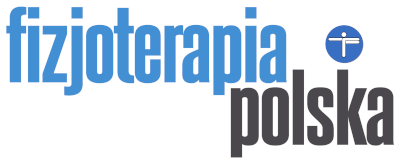Impact of different types of anaesthesia for cesarean delivery on subacute low back pain intensity and disability: A retrospective cohort study
Mohamed G. Ali, Mohammed A. Soliman, Amel M. Yousef, Fahima M. Okeel, Mohammed A.M. Sarhan
Mohamed G. Ali, Mohammed A. Soliman, Amel M. Yousef, Fahima M. Okeel, Mohammed A.M. Sarhan – Impact of different types of anaesthesia for cesarean delivery on subacute low back pain intensity and disability: A retrospective cohort study. Fizjoterapia Polska 2022; 22(3); 116-121
Abstract
Background. Low back pain (LBP) is common after cesarean delivery. So, this study was conducted to assess and compare the intensity of subacute LBP and disability among women who underwent cesarean delivery with different anaesthetic types.
Methodology. This retrospective cohort study was conducted to 38 women “26 of them underwent cesarean delivery, assessed after 6 to 12 weeks from delivery, they were classified into: [epidural anaesthetic group (Group A) n = 6, spinal anaesthetic group (Group B) n = 13, general anaesthetic group (Group C) n = 7], they were either primiparous or multiparous who did not receive anaesthesia for at least one year prior to the last delivery, the other 12 women were the control group (Group D) who didn’t experience pregnancy or anaesthesia”.
Results. The mean values of visual analogue scale (VAS) in Group A, Group B, Group C, and Group D were 5.00 ± 1.67, 4.62 ± 1.12, 5.14 ± 1.21, and 2.17 ± 0.71, respectively. The ANOVA test revealed a significant difference in VAS (P = 0.0001; P < 0.05) among the four groups. while the post-hoc test revealed non-significant differences (P = 1.000; P > 0.05) between the three anaesthetic groups. Also, the mean values of Oswestry Disability Index (ODI) in the same four groups were 26.00 ± 16.68, 27.00 ± 11.72, 30.00 ± 6.87, and 25.00 ± 9.33, respectively. The ANOVA test revealed non-significant difference in ODI (P = 0.838; P < 0.05) among the four groups.
Conclusion. Epidural, spinal and general anaesthesia for cesarean delivery are associated with increased intensity of subacute LBP, but without significant differences between these anaesthetic types. However, they do not increase the disability.
Key words:
neuraxial anaesthesia, general anaesthesia, cesarean delivery, subacute period, low back pain
| Pobierz/Download/下載/Cкачиваете | Download for free (English) |

